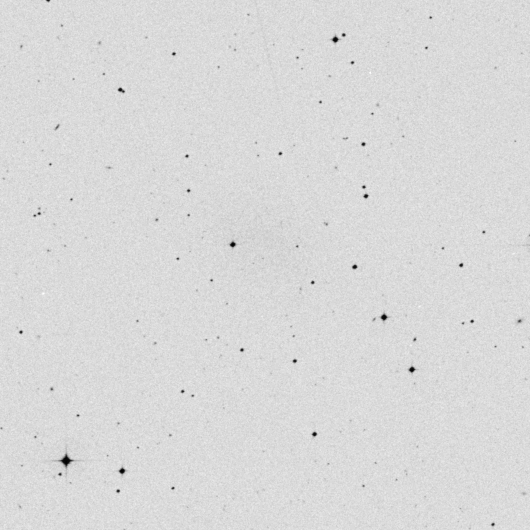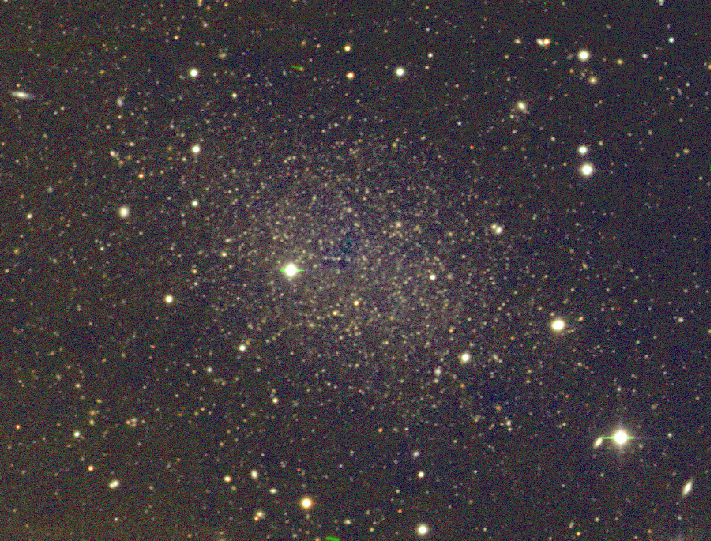
| |
|
|
|
|
|
|
| |
|
|
|
|
|
|

Home | History | Science | Observations | LG Members
Observations of the Local Group of Galaxies
CETUS DWARF
The Cetus dwarf was discovered in 1999 by Alan Whiting, George Hau and Mike Irwin after an inspection of the UKS plates. Further investigation with the 1.5m scope at CTIO and the 2.5M Isaac Newton Telescope showed that the galaxy resolved into stars. The anouncement of the discovery of a new local group member was made at the 194th meeting of the American Astronomical Society on the 4th of June.The Cetus dwarf appears to be very similar to the Tucana dwarf and other dwarf spheroidal galaxies. It appears to be composed completly of old redgiant stars. Long exposure photos of the galaxies show a very smooth distribution of stars, with no clusters or star forming regions.
The Cetus dwarf is 3 million lightyears distant and is isolated from the other members of the local group. The galaxy has a diameter of about 3000 lightyears and contains only 1 million stars. This makes the Cetus dwarf one of the smallest galaxies known.
The galaxy can be located almost 3.5 degrees SSE Lambda Cetus or almost a quater of the way from Lambda to Beta Cetus, and only half a degree SW of the variable star AG Cetus.
Steve Dillinger obesrving from Colorado USA using a 20" ƒ/3.95
The galaxy appeared as a very faint oval haze in contact with faint field stars. It could not be held with direct vision steadily. Appeared to have a length 3 times longer than it's width. The observation was confirmed by several other observers.
Photos of the Cetus Dwarf Galaxy

Image from the DSS.


